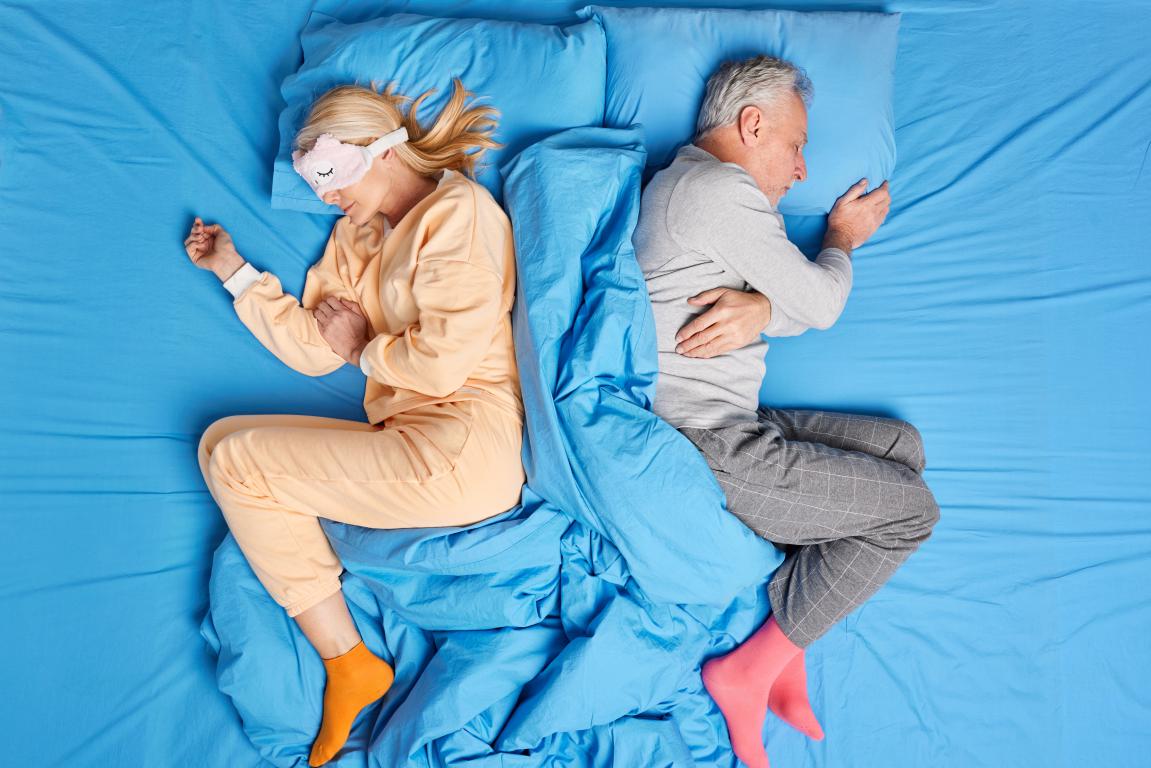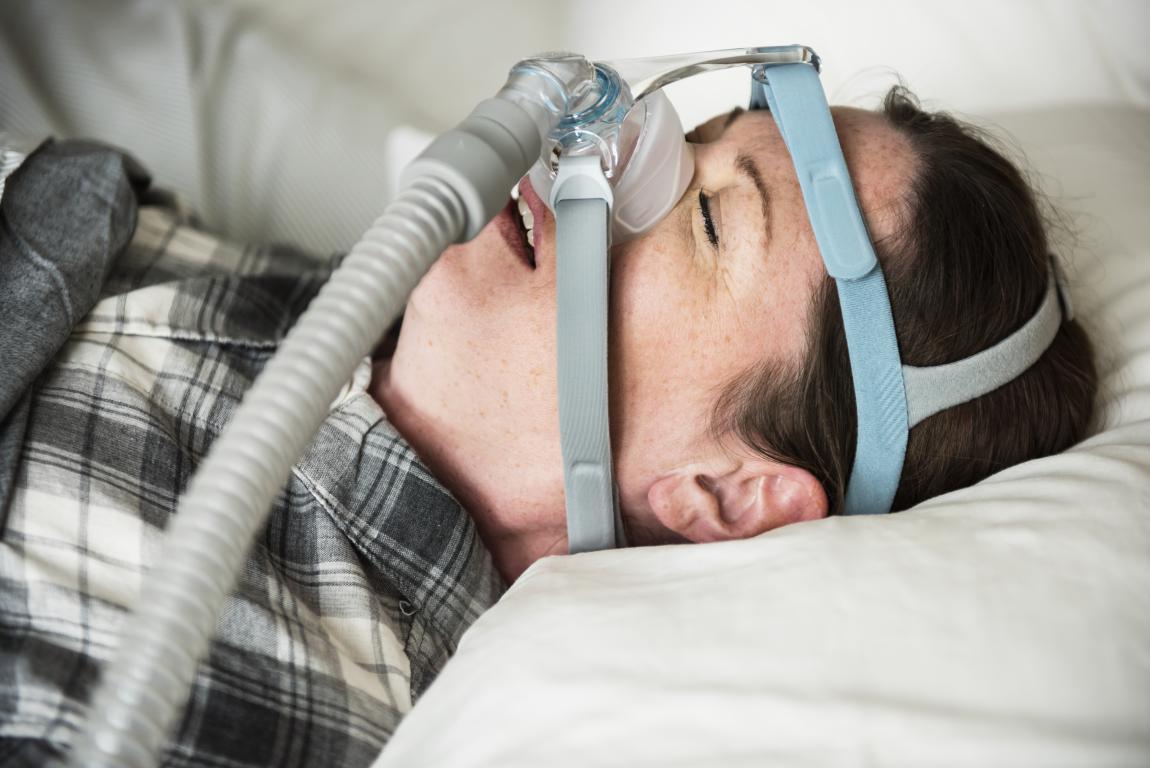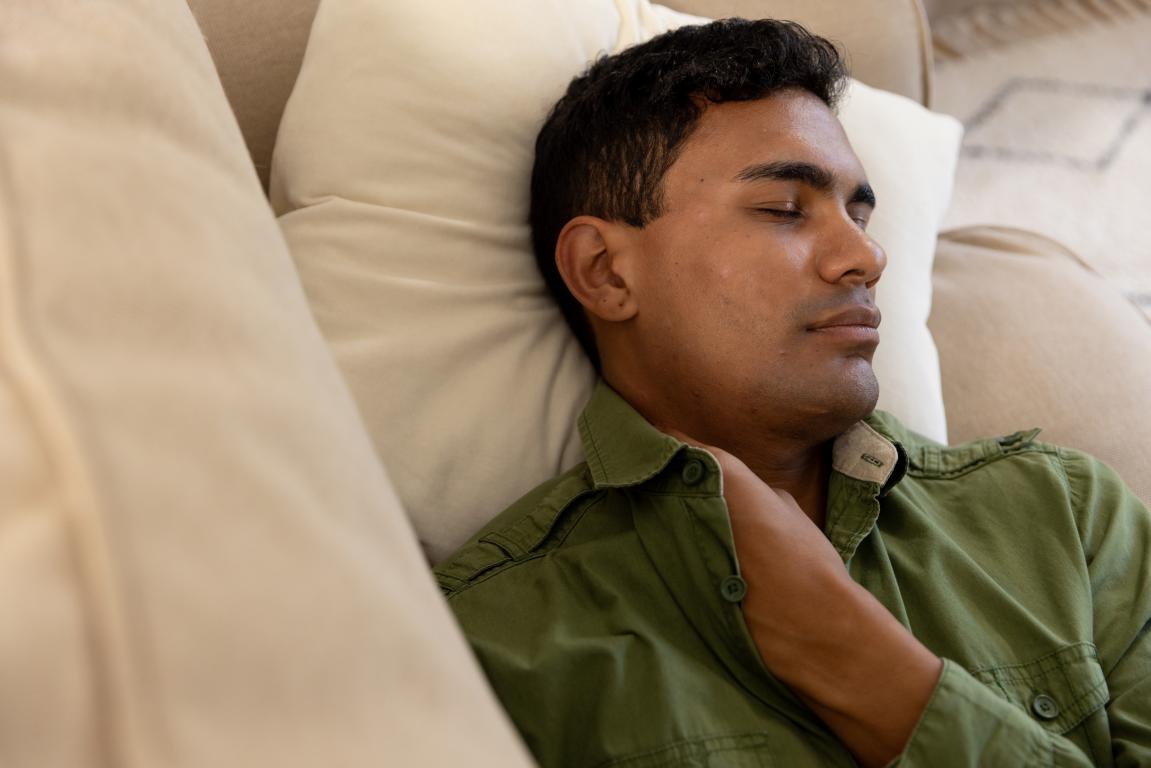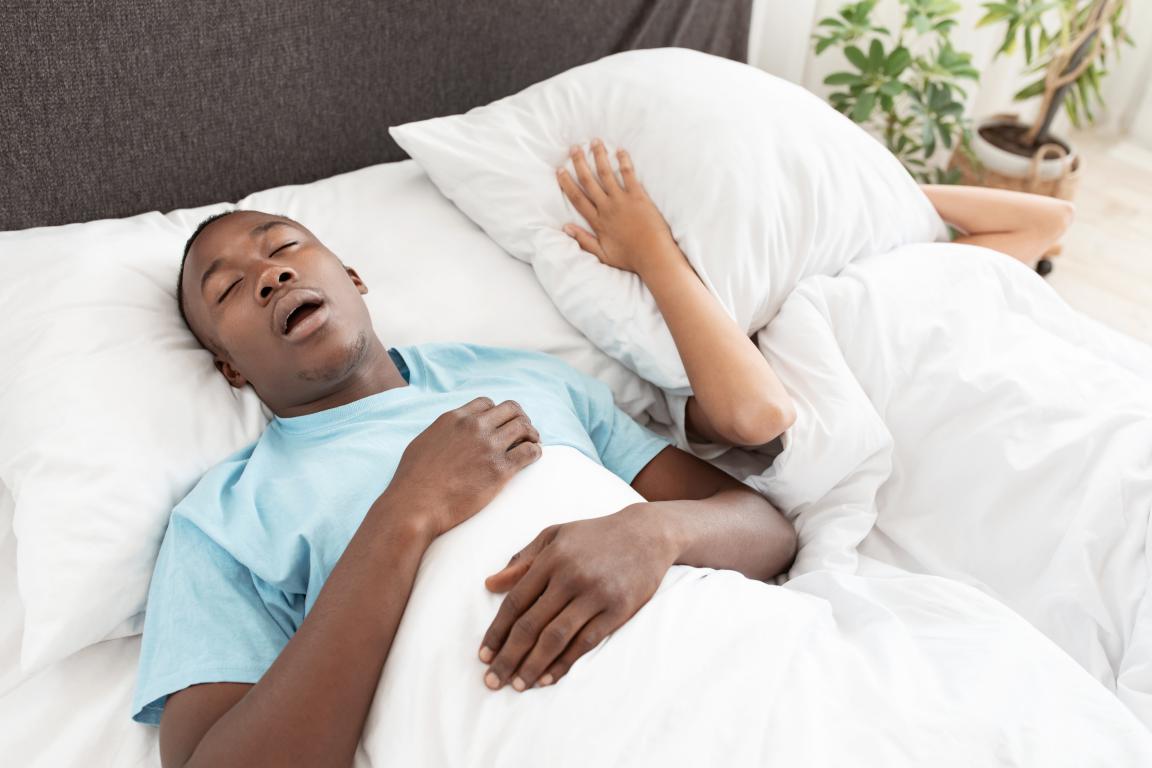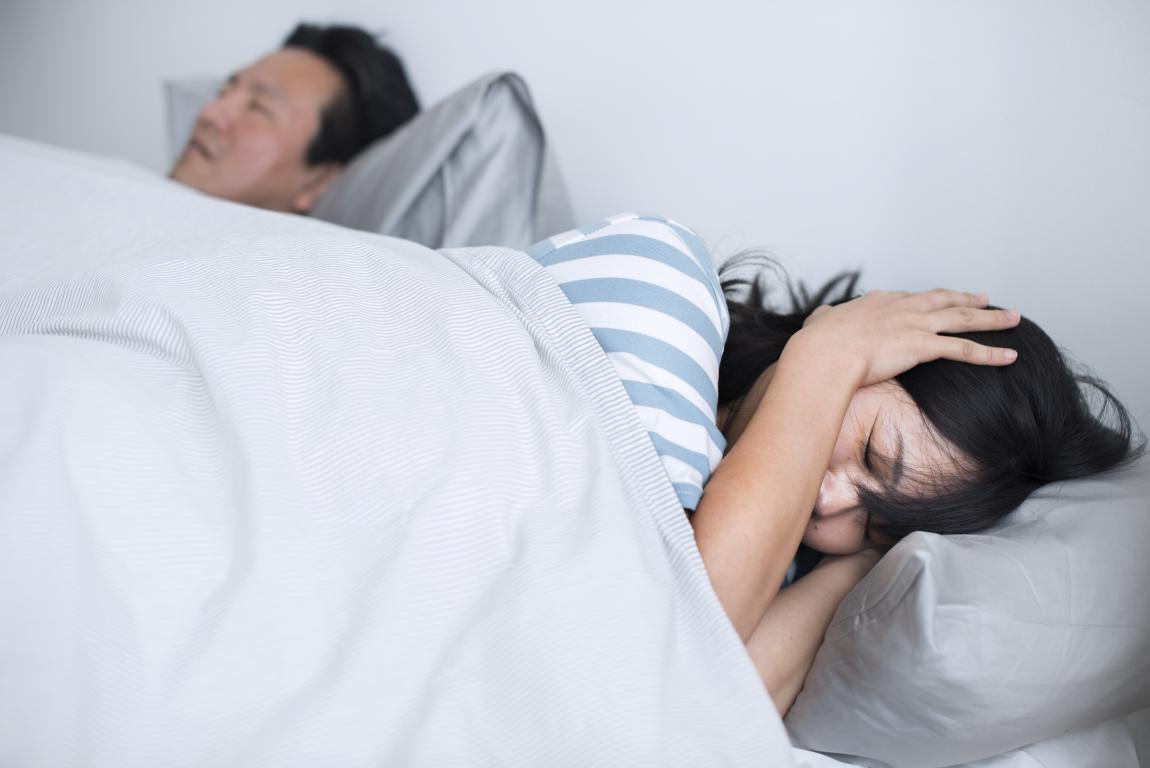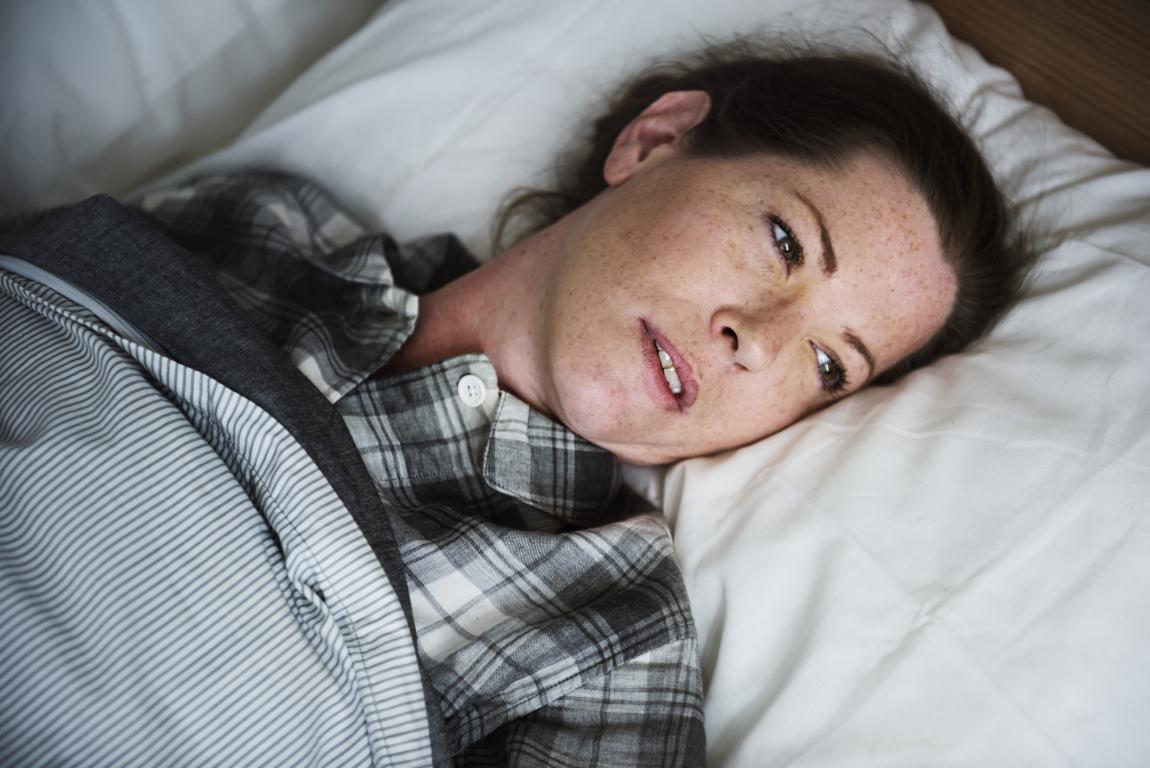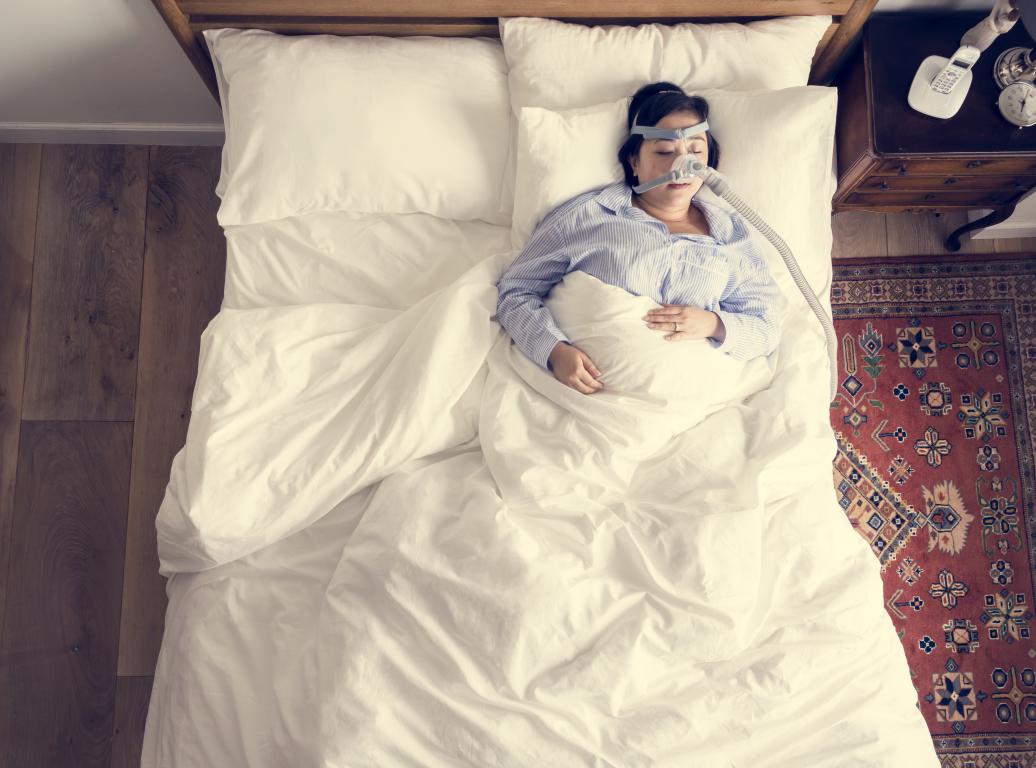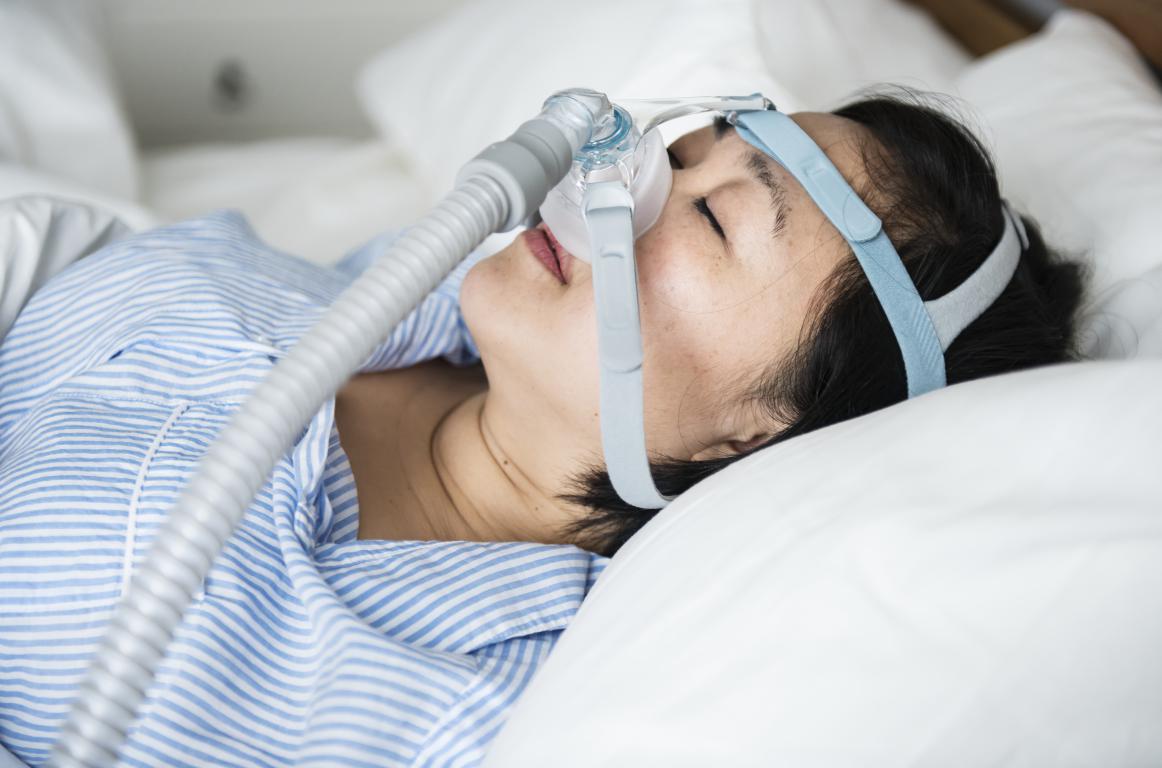What Is Sleep Apnea and How Do I Know If I Have It?
It's completely natural to feel a bit worried or confused if you're experiencing problems with your sleep, or if someone has mentioned that you snore loudly or stop breathing at night. Sleep can be a tricky thing, and when it feels disrupted, it can really impact how you feel during the day. You're not alone in seeking answers, and we understand that trying to figure out what's going on can be overwhelming.
This guide is here to help you understand what sleep apnea is, how it might be affecting you, and what signs to look out for. We'll break down everything in a clear, easy-to-understand way, so you can feel more informed and confident about what steps you might need to take next. Our aim is to give you all the information you need in one place, helping you to feel supported and understood every step of the way.
Table of Contents
What Exactly Is Sleep Apnea?
Sleep apnea sounds quite serious, and in some ways, it is, but understanding it is the first step towards managing it. At its heart, sleep apnea is a sleep disorder where your breathing repeatedly stops and starts while you're asleep. Imagine trying to breathe, but something is getting in the way, or your brain just isn't sending the right signals to breathe properly for a short time. This can happen many times throughout the night, often without you even realising it.
When your breathing stops, even for a few seconds, your body naturally reacts. Your brain senses that you're not getting enough oxygen, and it sends out a little alarm signal. This signal usually causes you to briefly wake up, just enough to start breathing again, but often not enough for you to remember waking. These repeated interruptions prevent you from getting the deep, restful sleep your body truly needs, which is why people with sleep apnea often feel exhausted even after a full night in bed.
It’s not just about snoring, although loud snoring is a very common symptom. It's about these pauses in breathing, which can range from a few seconds to over a minute, and they can occur dozens or even hundreds of times each night. Over time, these repeated episodes can have a significant impact on your health and daily life, which is why understanding what's happening is so important.
The Basic Mechanics of Breathing During Sleep
To really grasp what sleep apnea is, it helps to understand a little bit about how we normally breathe when we're asleep. When you're awake, your muscles keep your airway open and clear. But as you drift off to sleep, all your muscles relax, including those in your throat. For most people, this relaxation is completely normal and doesn't cause any problems. Air flows smoothly in and out, your lungs get oxygen, and your body gets rid of carbon dioxide.
With sleep apnea, something disrupts this smooth flow. When your breathing pauses or becomes very shallow, it means your body isn't taking in enough oxygen, and carbon dioxide can build up. Your brain, which is constantly monitoring your body's systems, picks up on these changes. It registers the drop in oxygen and the increase in carbon dioxide as a danger signal. This triggers a brief arousal, a tiny wake-up call, often so brief you don't even remember it in the morning. This jolt causes your throat muscles to tense up, opening your airway enough for you to take a breath, often accompanied by a gasp or a loud snort.
This cycle of stopping breathing, the brain sending an alarm, briefly waking, and then resuming breathing, can happen over and over again. It's these repeated disruptions that fragment your sleep and prevent you from getting into those crucial deep sleep stages that are so vital for physical and mental restoration.
Why It's Called "Apnea"
The word "apnea" itself comes from Greek, meaning "without breath." So, when we talk about sleep apnea, we're literally talking about being "without breath" during sleep. It's a precise term that describes the core issue of the condition – the temporary cessation of breathing. Understanding this terminology helps to highlight the fundamental problem: it's not just about noisy sleep, but about the critical function of breathing being interrupted.
The Different Kinds of Sleep Apnea
While the general term "sleep apnea" covers any condition where your breathing repeatedly stops and starts during sleep, it's actually an umbrella term for a few different types. Knowing the difference can be really helpful because each type has slightly different causes and, sometimes, different approaches to treatment. The two main types you'll hear about are Obstructive Sleep Apnea (OSA) and Central Sleep Apnea (CSA), and there's also a less common type called Complex or Mixed Sleep Apnea.
Obstructive Sleep Apnea (OSA)
This is by far the most common type of sleep apnea, accounting for the vast majority of cases. If someone talks about sleep apnea, they're usually referring to OSA.
What happens: With OSA, the problem lies in a physical blockage or narrowing of your airway while you're asleep. As you drift off, the muscles in your throat relax, which is normal. However, for people with OSA, these muscles relax so much that the soft tissues in the back of your throat, like your tongue, tonsils, or soft palate, collapse and block your airway. Imagine trying to suck air through a squashed straw – that's a bit like what happens.
Why it happens: There are several factors that can contribute to this physical obstruction.
-
Relaxed Throat Muscles: As we mentioned, muscles relax during sleep. If your throat muscles are already a bit looser, or if there's more tissue there, it's easier for them to collapse.
-
Anatomy: The natural shape and size of your neck, jaw, tonsils, or adenoids can play a big role. Some people simply have a narrower airway or larger tissues in their throat that are more prone to collapsing.
-
Weight: Being overweight or obese is a significant risk factor. Extra fatty tissue around the neck can add pressure and narrow the airway, making collapse more likely.
-
Alcohol and Sedatives: These substances relax your muscles even more than usual, increasing the likelihood of airway collapse.
-
Smoking: Smoking can cause inflammation and fluid retention in the upper airway, narrowing it.
-
Nasal Congestion: If you have allergies or a cold, a blocked nose forces you to breathe through your mouth, which can make your airway more unstable.
-
Age: As we get older, our muscle tone naturally decreases, which can make us more susceptible to OSA.
Symptoms: The classic symptom of OSA is loud, chronic snoring, often punctuated by gasps, snorts, or silent pauses where breathing stops. Daytime sleepiness, morning headaches, difficulty concentrating, and irritability are also very common. Your partner might be the first to notice the breathing pauses.
Central Sleep Apnea (CSA)
Central Sleep Apnea is much less common than OSA, and its cause is quite different.
What happens: With CSA, the airway itself isn't blocked. Instead, the problem lies in how your brain communicates with your breathing muscles. Your brain simply fails to send the necessary signals to your diaphragm and chest muscles to breathe. It's like your brain "forgets" to tell your body to take a breath for a short period.
Why it happens: CSA is often related to underlying medical conditions or issues with the brain's control of breathing.
-
Heart Failure: This is one of the most common causes, as heart failure can affect the body's ability to regulate carbon dioxide levels, which signals the brain to breathe.
-
Stroke or Brain Tumours: Damage to the brainstem, which controls breathing, can disrupt the signals.
-
Opioid Medication Use: Certain medications, especially strong pain relievers, can depress the brain's respiratory drive.
-
High Altitude: Being at a high altitude can sometimes trigger CSA in some individuals.
-
Kidney Failure: Chronic kidney disease can also affect the body's chemical balance, influencing breathing control.
Symptoms: While loud snoring isn't as common with CSA as it is with OSA (because there's no physical obstruction creating the sound), people with CSA will still experience pauses in breathing, followed by gasping or waking up. The main symptoms are often similar to OSA: excessive daytime sleepiness, morning headaches, and difficulty concentrating, all stemming from fragmented sleep.
Complex Sleep Apnea (Mixed Sleep Apnea)
Sometimes, a person can have characteristics of both Obstructive Sleep Apnea and Central Sleep Apnea. This is known as Complex Sleep Apnea or Mixed Sleep Apnea.
What happens: Typically, it starts with a diagnosis of OSA, but then, during treatment (often with a CPAP machine), central apneas also become evident. It's like there's an obstructive problem, but once that's addressed, the central, brain-related pauses become more obvious.
Why it happens: The exact reasons aren't fully understood, but it's believed that in some individuals, the brain's breathing control can become temporarily disrupted when the airway obstruction is removed, particularly during the initial phases of CPAP therapy for OSA.
Symptoms: The symptoms will be a mix of both OSA and CSA, primarily significant daytime sleepiness and disturbed sleep. Diagnosis and treatment can sometimes be a bit more nuanced because of the combination of issues.
Understanding these distinctions is important, but please remember that you don't need to self-diagnose. If you suspect you have any form of sleep apnea, the best thing to do is speak to your GP or a sleep specialist who can properly assess your symptoms and conduct the necessary tests. They'll be able to determine which type you might have and guide you towards the most effective treatment.
Why Is Sleep Apnea a Concern? Understanding the Risks
It's easy to dismiss snoring as just an annoying habit, but when it's linked to sleep apnea, it's much more than just noise. Those repeated pauses in breathing aren't just disturbing your sleep; they're also putting a strain on your body every single night. Your brain is constantly sending out emergency signals, your heart rate and blood pressure fluctuate dramatically, and your body is deprived of crucial oxygen. Over time, this constant stress can lead to a range of health problems, some of which can be quite serious.
It's really important to understand that sleep apnea isn't something to ignore. Getting a diagnosis and treatment isn't just about feeling less tired; it's about protecting your long-term health and improving your overall quality of life. Let's look at some of the key reasons why sleep apnea is a significant concern.
Impact on Your Daily Life and Well-being
Even if you're not aware of waking up, those constant brief arousals mean you're not getting into the deep, restorative stages of sleep that your body and mind desperately need. This lack of quality sleep has a profound impact on how you feel and function every day.
-
Excessive Daytime Sleepiness: This is perhaps the most common and noticeable symptom. You might find yourself struggling to stay awake during the day, whether you're at work, watching TV, or even driving. This isn't just feeling a bit tired; it's an overwhelming urge to sleep that can be difficult to fight off.
-
Fatigue and Low Energy: Beyond just feeling sleepy, you might experience a persistent feeling of exhaustion, like your batteries are always running low. Simple tasks can feel monumental, and you might lose interest in activities you once enjoyed.
-
Difficulty Concentrating and Memory Problems: Your brain isn't getting the chance to rest and process information properly. This can lead to brain fog, struggling to focus at work or school, and even issues remembering things.
-
Irritability and Mood Changes: Constant sleep deprivation can make anyone grumpy. You might find yourself more irritable, easily frustrated, or even experiencing symptoms of depression or anxiety. Your emotional resilience takes a hit when you're not getting proper sleep.
-
Reduced Quality of Life: All these daily impacts combined can significantly reduce your overall enjoyment of life. Relationships can suffer, job performance can decline, and your ability to participate in hobbies or social activities might diminish.
Serious Health Complications
Beyond the daily struggles, untreated sleep apnea significantly increases your risk of developing or worsening several serious medical conditions. This is because the repeated drops in oxygen and the constant stress on your cardiovascular system take their toll.
-
High Blood Pressure (Hypertension): This is one of the most well-established links. Each time your breathing stops, your blood pressure goes up. Over time, these repeated spikes can lead to chronically high blood pressure, which is a major risk factor for heart disease and stroke.
-
Heart Problems: The strain on your heart can lead to various issues, including an increased risk of heart attack, irregular heartbeats (arrhythmias), and even heart failure. Sleep apnea can also worsen existing heart conditions.
-
Stroke: High blood pressure and other cardiovascular problems linked to sleep apnea increase your risk of having a stroke.
-
Type 2 Diabetes: There's a strong connection between sleep apnea and insulin resistance, which can lead to or worsen Type 2 diabetes. Sleep disruption affects how your body processes glucose.
-
Weight Gain: Ironically, sleep apnea can contribute to weight gain, creating a vicious cycle, as excess weight is also a risk factor for sleep apnea. Sleep deprivation can affect hormones that control appetite, leading to increased cravings and less energy for physical activity.
-
Liver Problems: Some research suggests a link between sleep apnea and an increased risk of non-alcoholic fatty liver disease.
-
Complications with Medications and Surgery: If you have sleep apnea, you might be at a higher risk of complications with certain medications (especially sedatives) and during surgery, as anaesthesia can further relax your throat muscles, making breathing more difficult. It's crucial to inform your medical team if you have or suspect you have sleep apnea before any procedures.
-
Accidents: Due to excessive daytime sleepiness, people with untreated sleep apnea have a much higher risk of drowsy driving accidents and accidents at work. Your reaction times and alertness are severely compromised.
Why Early Diagnosis and Treatment Matter
Given the extensive list of potential impacts and health risks, it's clear why early diagnosis and effective treatment for sleep apnea are so vital. It's not just about improving your sleep; it's about safeguarding your health, improving your daily functioning, and adding years of healthy, active life.
If you suspect you or someone you know might have sleep apnea, taking that step to speak to a healthcare professional is one of the most important things you can do. It can truly be life-changing, alleviating symptoms and reducing the risk of these serious complications. Don't underestimate the power of a good night's sleep – it's fundamental to your overall health and well-being.
Spotting the Signs: How Do I Know If I Have Sleep Apnea?
"How do I know if I have it?" is one of the most common and important questions people ask about sleep apnea. The tricky thing is, many of the most telling signs happen when you're unconscious, while you're asleep! This often means that a bed partner, family member, or even a housemate might be the first to notice something's wrong. However, there are also plenty of clues you can pick up on yourself during your waking hours.
It's like being a detective for your own body and sleep patterns. You're looking for a collection of symptoms, rather than just one. If you recognise several of these signs in yourself, it's a strong indication that you should talk to your GP.
Night-Time Symptoms (Often Noticed by Others)
These are the big, tell-tale signs that someone else might notice while you're asleep. They're often the reason people's partners urge them to get checked out.
-
Loud and Persistent Snoring: This is probably the most common symptom of Obstructive Sleep Apnea (OSA). It's not just light snoring; we're talking about really loud, disruptive snoring that can be heard through walls! The sound is created by air trying to force its way through a narrowed or partially blocked airway.
-
Pauses in Breathing (Apneas): This is the crucial one. Someone observing you might notice periods where your snoring stops, and you seem to stop breathing altogether. These pauses can last for several seconds, or even a minute or more, before you suddenly gasp, snort, or choke yourself awake to resume breathing. This can be quite alarming for anyone witnessing it.
-
Gasping, Snorting, or Choking Sounds During Sleep: Following a pause in breathing, you might make a loud gasp, snort, or choking sound as your body forces itself to take a breath and clear the airway. This is your brain's alarm system kicking in to restart your breathing.
-
Restless Sleep: Even if you don't remember waking up, your sleep can be very restless. You might toss and turn a lot, or move around in bed more than usual, as your body constantly struggles to breathe.
-
Frequent Urge to Urinate During the Night (Nocturia): While it can be a symptom of other conditions, needing to get up to wee multiple times during the night can also be linked to sleep apnea. The stress on your cardiovascular system and the fragmented sleep can affect kidney function and hormone levels that regulate urine production.
-
Sweating Heavily During Sleep: Some people with sleep apnea report waking up drenched in sweat. This could be due to the increased effort your body is making to breathe or the stress response of your sympathetic nervous system.
Daytime Symptoms (Things You'll Notice Yourself)
Even if no one has told you about your night-time habits, the lack of restorative sleep will definitely make itself known during your waking hours.
-
Excessive Daytime Sleepiness (Hypersomnia): This is more than just feeling a bit tired; it's an overwhelming urge to sleep throughout the day. You might find yourself falling asleep unintentionally while working, watching TV, reading, or even driving. It can be incredibly difficult to fight off this sleepiness.
-
Morning Headaches: Waking up with a dull headache that often fades within an hour or two is a common symptom. This is thought to be caused by the changes in oxygen and carbon dioxide levels in your blood during the night.
-
Difficulty Concentrating or "Brain Fog": If your brain isn't getting adequate rest, its cognitive functions suffer. You might find it hard to focus, make decisions, or remember things. Your mental sharpness can feel significantly diminished.
-
Irritability and Mood Swings: Being chronically sleep-deprived can make you feel constantly on edge. You might find yourself easily annoyed, short-tempered, or experiencing increased anxiety or symptoms of depression. Your emotional regulation takes a hit.
-
Dry Mouth or Sore Throat Upon Waking: If you're struggling to breathe through your nose, you'll often mouth-breathe during the night. This can lead to a very dry mouth and a sore or scratchy throat in the morning.
-
Loud Snoring (Heard by You): While often noticed by others, sometimes you might be aware of your own snoring if it's loud enough to wake you up or if you can feel the vibrations.
-
Reduced Libido: Sleep apnea can affect hormone levels and overall energy, which can lead to a decreased interest in sex.
-
Feeling Unrefreshed After Sleep: You might sleep for 7-8 hours, but still wake up feeling just as tired as when you went to bed, or even more so. This is a key indicator that your sleep quality is poor, regardless of the quantity.
When to Seek Medical Advice
If you recognise several of these symptoms in yourself, particularly the combination of loud snoring, observed breathing pauses, and excessive daytime sleepiness, it's really important to talk to your GP.
Don't dismiss these signs. Sleep apnea is a treatable condition, and getting a diagnosis is the first step towards improving your sleep, your health, and your overall quality of life. Your GP can assess your symptoms, discuss your medical history, and refer you for further investigations, such as a sleep study, if they suspect sleep apnea. They are there to help you figure out what's going on and guide you towards the right support.
Getting a Sleep Apnea Diagnosis: What to Expect
If you've noticed several of the symptoms we've discussed, or if your partner has flagged concerns about your breathing during sleep, the next crucial step is to seek a professional diagnosis. It can feel a bit daunting to think about medical tests, but getting a proper diagnosis is absolutely essential for confirming whether you have sleep apnea and determining the best course of treatment for you.
Remember, you don't have to navigate this alone. Your GP is your first port of call, and they'll guide you through the process. Here’s a breakdown of what you can generally expect when seeking a diagnosis for sleep apnea in the UK.
Your First Step: Visiting Your GP
Your journey usually begins with a visit to your General Practitioner. This is a very important appointment, so it's a good idea to prepare for it.
-
Discuss Your Symptoms: Be prepared to describe all the symptoms you've been experiencing, both during the day and at night. This includes how tired you feel, any morning headaches, concentration issues, and any mood changes.
-
Bring a "Witness": If you have a bed partner or family member who has observed your snoring or breathing pauses, it can be incredibly helpful for them to come with you or to provide a detailed account. Their observations are often key in building a picture of your night-time issues.
-
Medical History: Your GP will ask about your general health, any other medical conditions you have, medications you're taking, and your lifestyle habits (like smoking, alcohol consumption, and exercise).
-
Physical Examination: They might perform a brief physical exam, checking your blood pressure, looking at your throat, tonsils, and the size of your neck, as these can sometimes offer clues.
-
Initial Assessment: Based on your symptoms and history, your GP will make an initial assessment. If they suspect sleep apnea, they'll usually refer you to a specialist for further investigation. This might be a sleep clinic, a respiratory specialist, or an ear, nose, and throat (ENT) specialist, depending on the local services and the suspected cause.
Sleep Studies: The Main Diagnostic Tool
The definitive way to diagnose sleep apnea and determine its severity is through a sleep study, also known as polysomnography (PSG). This test monitors various bodily functions while you sleep. There are a couple of ways these studies can be conducted.
1. Home Sleep Study (Ambulatory Monitoring)
For many people, the first step in diagnosing sleep apnea is often a home sleep study. This is usually preferred because it's less disruptive and you get to sleep in your own bed, which can make the results more typical of your usual sleep.
-
How it Works: You'll be given a small, portable device to take home, along with instructions on how to attach sensors to your body before you go to sleep. These sensors typically monitor:
-
Breathing effort: How hard your chest and abdomen are working to breathe.
-
Airflow: Whether air is moving in and out of your nose and mouth.
-
Oxygen levels: A small clip on your finger measures the oxygen saturation in your blood (pulse oximetry).
-
Heart rate: To detect any changes during breathing pauses.
-
Sometimes snoring: A microphone might record snoring sounds.
-
The Process: You'll attach the sensors before you go to bed, turn on the device, and sleep as normally as possible. In the morning, you'll remove the sensors and return the device to the clinic or hospital.
-
Advantages: It's convenient, less stressful than sleeping in an unfamiliar environment, and generally more comfortable.
-
Disadvantages: It doesn't monitor as many parameters as an in-lab study, so it might not pick up on all sleep-related issues. It also doesn't record brain activity, so it can't accurately distinguish between different sleep stages. However, for straightforward sleep apnea, it's often sufficient.
2. In-Lab Sleep Study (Polysomnography - PSG)
If a home sleep study isn't conclusive, or if there's suspicion of other complex sleep disorders, your doctor might recommend an in-lab sleep study, usually conducted overnight at a dedicated sleep clinic.
-
How it Works: This is a much more comprehensive test. You'll spend a night sleeping in a private room at the sleep clinic, while specialists monitor a wide range of your bodily functions. Wires and sensors will be attached to many parts of your body.
-
What it Monitors:
-
Brain Waves (EEG): To identify sleep stages (light sleep, deep sleep, REM sleep) and detect awakenings.
-
Eye Movements (EOG): To help identify REM sleep.
-
Muscle Activity (EMG): To detect restless leg syndrome or other movement disorders.
-
Heart Rate and Rhythm (ECG): For a more detailed look at your heart's activity.
-
Breathing Effort and Airflow: More detailed measurements than a home study.
-
Blood Oxygen Levels (Oximetry): Continuous monitoring.
-
Snoring and Other Sounds: Recorded with a microphone.
-
Body Position: To see if sleep apnea is worse in certain positions.
-
The Process: You arrive at the clinic in the evening, get prepared with the sensors, and then try to sleep. A technologist will be in a nearby room monitoring the data. It can feel a bit strange sleeping with all the wires, but the staff are trained to make you as comfortable as possible.
-
Advantages: Provides a very detailed and accurate picture of your sleep and breathing patterns, allowing for precise diagnosis and differentiation between types of sleep apnea and other sleep disorders.
-
Disadvantages: Less comfortable and convenient than a home study, and some people find it harder to sleep in an unfamiliar environment, which can sometimes affect the results.
Interpreting the Results
Once your sleep study is complete, the data will be analysed by a sleep specialist. They'll look for:
-
Apneas: Complete cessations of breathing.
-
Hypopneas: Significant reductions in airflow.
-
Oxygen Desaturations: Drops in your blood oxygen levels.
-
Arousals: Brief awakenings due to breathing disturbances.
The number of apneas and hypopneas per hour of sleep is calculated, which gives an Apnea-Hypopnea Index (AHI). This index is key to determining the severity of sleep apnea:
-
Mild Sleep Apnea: AHI of 5-15 events per hour.
-
Moderate Sleep Apnea: AHI of 15-30 events per hour.
-
Severe Sleep Apnea: AHI of more than 30 events per hour.
Based on these results and your symptoms, the specialist will confirm if you have sleep apnea, what type it is, and its severity. They will then discuss treatment options with you.
Getting a diagnosis might take a little time, but it's a vital step. Understanding exactly what's going on with your sleep is the foundation for effective treatment, helping you to regain restful nights and better health.
Living with Sleep Apnea: Treatments and Management
Receiving a diagnosis of sleep apnea can bring a mix of emotions – relief at finally having an answer, but perhaps also some anxiety about what comes next. The good news is that sleep apnea is a treatable condition, and there are several effective ways to manage it, helping you to get the restorative sleep you need and reduce the associated health risks.
Treatment plans are usually tailored to the individual, taking into account the type and severity of your sleep apnea, your general health, and your personal preferences. The goal is always to improve your breathing during sleep, alleviate your symptoms, and enhance your overall well-being.
Primary Treatment: Continuous Positive Airway Pressure (CPAP)
For most people with moderate to severe Obstructive Sleep Apnea (OSA), and sometimes for milder cases, Continuous Positive Airway Pressure (CPAP) therapy is the most common and highly effective treatment.
-
How it Works: A CPAP machine delivers a constant stream of air pressure through a mask that you wear over your nose, or over your nose and mouth, while you sleep. This gentle air pressure acts like an "air splint," keeping your airway open and preventing the soft tissues from collapsing. It ensures you breathe continuously and without obstruction throughout the night.
-
The Equipment: A CPAP system consists of:
-
A CPAP machine: A small, quiet device that sits by your bedside.
-
A hose: Connects the machine to your mask.
-
A mask: Available in various styles (nasal pillows, nasal mask, full-face mask) to fit comfortably and securely.
-
Sometimes a humidifier: Many machines include a heated humidifier to add moisture to the air, preventing dryness and irritation.
-
Getting Used to CPAP: It can take some time to get used to wearing a mask and sleeping with the machine. It's perfectly normal to feel a bit overwhelmed or uncomfortable at first. Your sleep clinic team will work closely with you to find the right mask type and size, adjust the pressure settings, and provide support.
-
Benefits: When used consistently, CPAP can dramatically reduce or eliminate apneas and hypopneas, leading to:
-
Reduced daytime sleepiness and fatigue.
-
Improved concentration and memory.
-
Better mood and reduced irritability.
-
Lower blood pressure and reduced risk of heart problems and stroke.
-
Less snoring.
-
Overall improvement in quality of life.
-
Adherence is Key: The effectiveness of CPAP relies on consistent use. Using it for only part of the night or only occasionally won't provide the full benefits. Many modern CPAP machines also record usage data, which your healthcare team can review to ensure the therapy is working effectively.
Other Airway Pressure Devices
While CPAP is the most common, other types of positive airway pressure devices exist for specific situations:
-
Bilevel Positive Airway Pressure (BiPAP or BPAP): These machines deliver two different pressure levels: a higher pressure when you inhale and a lower pressure when you exhale. This can be more comfortable for some people, particularly those who struggle with exhaling against CPAP pressure, or those with central sleep apnea or complex sleep apnea.
-
Auto-CPAP (APAP): These machines automatically adjust the air pressure within a set range, adapting to your breathing needs throughout the night. This can be more responsive to changes in sleep position or sleep stage.
Oral Appliances
For individuals with mild to moderate OSA, or those who cannot tolerate CPAP therapy, an oral appliance might be a suitable alternative.
-
How it Works: These are custom-made dental devices, similar to a mouthguard, worn only during sleep. The most common type is a Mandibular Advancement Device (MAD). It works by gently pushing your lower jaw and tongue slightly forward, which helps to keep your airway open and prevents it from collapsing.
-
Fitting: An oral appliance needs to be custom-fitted by a specially trained dentist.
-
Benefits: Can be effective for specific types of OSA, are discreet, and don't require electricity.
-
Considerations: May not be as effective as CPAP for more severe cases. Can sometimes cause jaw discomfort or changes in bite, though these are often temporary. Regular check-ups with the dentist are important.
Lifestyle Changes and Self-Management Strategies
Alongside medical treatments, certain lifestyle adjustments can significantly help manage sleep apnea, and in some mild cases, they might even be enough on their own.
-
Weight Loss: If you are overweight or obese, losing even a modest amount of weight can make a big difference in reducing the severity of OSA. Extra weight around the neck can narrow the airway, and shedding those pounds can help open it up.
-
Avoid Alcohol and Sedatives: Alcohol and certain medications (like sleeping pills or some sedatives) relax your throat muscles, making airway collapse more likely. Avoiding them, especially in the hours before bed, can be very beneficial.
-
Change Sleeping Position: Sleeping on your back often makes sleep apnea worse, as gravity can cause your tongue and soft palate to fall back and block your airway. Sleeping on your side can help keep your airway open. Special pillows or devices that encourage side sleeping can be useful.
-
Quit Smoking: Smoking can cause inflammation and swelling in the upper airway, making sleep apnea worse. Quitting can improve your breathing and overall health.
-
Treat Nasal Congestion: If you have allergies or chronic nasal congestion, addressing these issues (e.g., with nasal sprays, antihistamines, or saline rinses) can improve nasal airflow and reduce the tendency to mouth breathe, which can exacerbate OSA.
-
Regular Exercise: While not a direct treatment, regular physical activity supports overall health, helps with weight management, and can improve muscle tone, all of which indirectly benefit sleep apnea.
Surgical Options
Surgery is generally considered a last resort for sleep apnea and is usually only recommended if other treatments haven't been successful, or if there's a specific anatomical issue that can be corrected. The effectiveness of surgical procedures varies greatly.
-
Uvulopalatopharyngoplasty (UPPP): This procedure removes excess tissue from the back of the throat (tonsils, uvula, and part of the soft palate) to enlarge the airway.
-
Maxillomandibular Advancement (MMA): A more invasive surgery that moves the jawbones forward to enlarge the entire airway.
-
Other Procedures: These can include removing enlarged tonsils and adenoids (especially in children), or procedures to stiffen the soft palate.
-
Tracheostomy: In very rare, severe, and life-threatening cases where other treatments have failed, a tracheostomy (creating an opening in the windpipe) might be performed to bypass the upper airway entirely.
Living with sleep apnea means taking an active role in your health. Work closely with your sleep specialist or GP to find the right treatment plan for you. Consistency with your chosen therapy and adopting healthy lifestyle habits are key to effectively managing the condition and enjoying the benefits of restful, refreshing sleep. It's a journey, but one that leads to a much healthier and more energised life.
Living with Sleep Apnea: Practical Considerations and Support
Receiving a diagnosis of sleep apnea and integrating a treatment plan into your daily life is a significant step towards better health. As you learn to manage your condition, you might also consider various practical aspects of living with sleep apnea, particularly regarding safety and communication in unexpected situations. We understand that ensuring your health information is accessible, especially when you might be unable to speak for yourself, can be a source of peace of mind.
While medical treatments are fundamental, thinking about how you communicate your condition in daily life, or during an emergency, is another facet of proactive self-care.
The Value of Carrying Key Medical Information
Consider a scenario where you're out and about, perhaps feeling unwell, or involved in an unforeseen incident where you cannot clearly communicate. In such moments, how quickly would first responders or medical professionals become aware of your sleep apnea? Knowing this vital detail, especially if you rely on a CPAP machine at night, can be crucial for them to provide the most appropriate and timely assistance.
For many living with medical conditions, carrying a form of personal medical identification is a thoughtful step. Such an item can serve as a discreet, yet highly effective, way to convey essential health information when you might be unable to.
-
Ensuring Quick Awareness: A compact item that clearly states "Sleep Apnea" helps to immediately inform anyone assisting you of your condition. This rapid communication can be incredibly important for guiding their actions and ensuring that your specific health needs are recognised, particularly concerning breathing support.
-
Accessible Details for Emergency Contacts: Beyond just identifying the condition, such an item can also list an emergency contact. This means that a loved one can be reached quickly, providing further context and support during a stressful time.
-
A Personal Communication Aid: Essentially, carrying key medical details acts as a silent advocate. It speaks for you when you cannot, helping to bridge the information gap in critical moments. This can offer a sense of security, knowing that important aspects of your health are always available for reference, whether you are in unfamiliar surroundings or just going about your day.
Taking the step to carry readily accessible information about your sleep apnea is a proactive choice that aligns with effective self-management. It’s about being prepared, ensuring your health details are understood, and adding an extra layer of reassurance for yourself and those around you. To find out more then visit our Sleep Apnea section on our website.
Further Resources and Support
Navigating a condition like sleep apnea often means wanting to learn more, connect with support networks, or find additional information from trusted sources. We've gathered a list of reputable organisations and resources that can offer further guidance, detailed medical information, and practical support for living with sleep apnea in the UK. These links are provided to help you continue your journey of understanding and self-management.
Please remember that while these resources offer valuable information, they are not a substitute for professional medical advice. Always consult with your GP or sleep specialist for personalised guidance regarding your condition and treatment.
© 2024 The Card Project Uk Ltd
VAT: 453 2087 06
|
